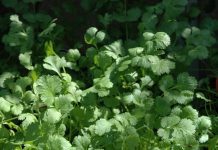STOCKTON, Mo. — “Bull development and management is important to promote optimum breeding performance during the breeding season,” says Patrick Davis, MU Extension Livestock Field Specialist. Optimum breeding performance leads to optimum herd pregnancy rates which is important to cattle herd productivity and profitability. Davis urges cattle producers to read this article that will provide tips in selection, development, and management of bulls for optimum performance during the breeding season.
“Bulls need to be structurally sound, have good feet and legs to do their job during the breeding season, and transmit these traits to offspring that are retained in the herd,” says Davis. Poorly structured bulls may perform poorly during the breeding season. Furthermore, if replacements are retained, these poor structure genetics are propagated through the herd. Davis urges cattle producers that when developing and selecting bulls, always evaluate structure and cull bulls that don’t have optimum structural soundness. Here are some guides to review to help evaluate structural soundness in cattle:
https://redangus.org/wp-content/uploads/2021/08/Foot_and_Leg_Scoring_Guidelines_2021_web.pdf
https://www.angus.org/Performance/Documents/footscoreposter.pdf
“Manage bulls to be in proper body condition during development and as they enter the breeding pasture for optimum breeding performance,” says Davis. Body condition score, which is evaluated at the topline, tail head, hooks, pins, and brisket, is an indicator of energy status. Davis urges cattle producers to manage bulls to a body condition score of 6, which is a smooth appearance of fat cover throughout, during development and when he enters the breeding pasture. Furthermore, bulls that are developed to a higher body condition score need to be brought down to that 6 score prior to entering the breeding pasture for optimum breeding performance. For more guidance on body condition score evaluation and management Davis urges cattle producers to read MU Extension guide g2230 at https://extension.missouri.edu/media/wysiwyg/Extensiondata/Pub/pdf/agguides/ansci/g02230.pdf.
“Bulls need to be adapted to a high forage diet prior to entering the breeding pasture,” says Davis. Sometimes bulls are feed a high concentrate diet during performance testing. Davis urges cattle producers to adapt these bulls to a high roughage diet prior to entering the breeding pasture to reduce the stress of breeding pasture diet transition. Furthermore, this strategy also helps bulls to be in proper condition and plane of nutrition as they enter the breeding pasture, which will help promote optimum breeding season performance.
“Consult your veterinarian to develop a proper vaccination and parasite control program for your bulls,” says Davis. Davis suggests this to help your bulls develop to their full potential. Furthermore, this reduces the chance of bulls bringing health and parasite problems into the cattle herd. Davis urges cattle producers to use MU Extension Guide g2044 (https://extension.missouri.edu/media/wysiwyg/Extensiondata/Pub/pdf/agguides/ansci/g02044.pdf) when working with your veterinarian to develop the best vaccination and parasite control program for your bulls.
“Bulls need to have a breeding soundness exam done by the veterinarian prior to the breeding season,” says Davis. During this exam the bull’s reproductive tract and semen quality is evaluated to make sure the bull is acceptable to breed cows in the upcoming breeding season. Additionally, cattle producers can evaluate structural soundness, body condition score, and provide annual vaccinations and parasite control at this time. Davis urges this exam to makes sure that bulls are healthy and ready to breed cows during the breeding season.
“Optimum bull to cow ratio is important for optimum breeding season performance,” says Davis. Rule of thumb on young bulls is one cow per month of age up to 2 years. For example, if the bull was 14 months old then he should be paired with 14 cows. Mature bulls should be paired in a ratio of 1 to 25 to 35 cows for optimum pregnancy rates. Davis urges cattle producers that use estrous synchronization and artificial insemination to consult MU Extension guide g2027 (https://extension.missouri.edu/media/wysiwyg/Extensiondata/Pub/pdf/agguides/ansci/g02027.pdf) for recommendation on bull to cow ratio in this scenario.
“If multi-sire bull breeding pastures are used make sure bulls are close in age and are acclimated to each other prior to turned out,” says Davis. This will cut down on fighting and injury issues as the bulls enter the breeding pasture which means they are more likely to breed cows.
“Once the bull is in the breeding pasture, monitor to make sure proper performance is taking place,” says Davis. Check the bull periodically to make sure he is breeding cows. Also monitor cows and if you notice multiple cows repeatedly returning to estrus or heat during the breeding season this might be the result of a bull failure and the bull should be evaluated and if need be, replaced. On young bulls, watch for maintenance in body condition and if condition slips to a 4, which is considered thin condition, the bull should be replaced with a bull in acceptable condition and energy status. Also watch bulls for any injuries and treat or replace bulls as those problems arise.
For more information on proper development and management of bulls for optimum breeding season success contact your local MU Extension Livestock Field Specialist.
















